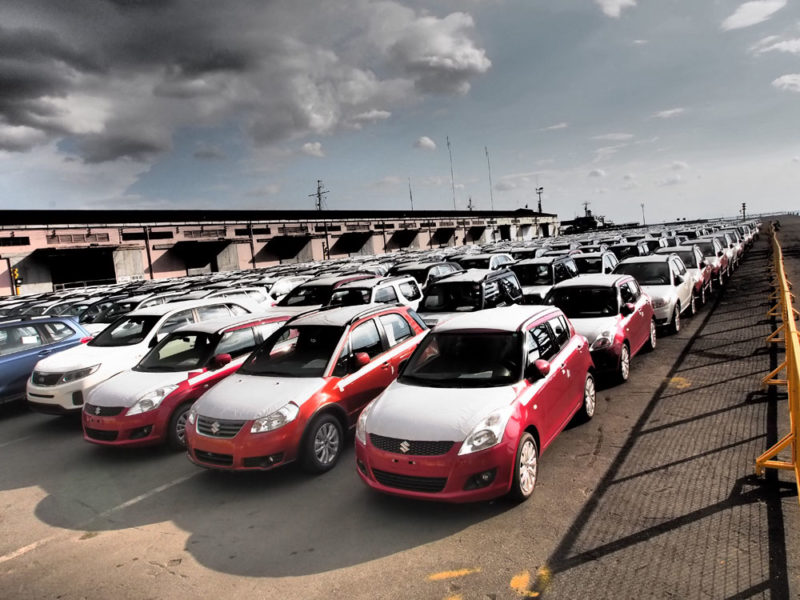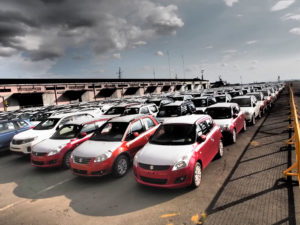

Listed Philippine port operator Asian Terminals Inc. (ATI) is spending at least P4.6 billion this year to sustain operational efficiency and grow capacity at its international gateway ports in Manila and Batangas in support of the country’s economy.
Special focus is trained on Batangas Port this year as ATI further expands the port’s role in facilitating trade in Calabarzon (Cavite, Laguna, Batangas, Rizal, and Quezon) and helping the government decongest metro roads, consistent with the administration’s vision of spurring countryside growth.
Central to the operator’s plans is the expansion of Batangas Container Terminal (BCT), beginning with extending the terminal’s crane rails and container yard. In line with this, two additional quay cranes, four more rubber-tired gantry cranes and other cargo-handling equipment are set for delivery by 2018 to realize ATI’s plans to double BCT’s capacity to over 600,000 twenty-foot equivalent units (TEUs).
In 2016, BCT handled over 160,000 TEUs of foreign boxes, its highest container throughout in a single year. More significantly, this reduced truck trips along metro roads by more than 80,000, as more shippers opted to route commodities via Batangas instead of Manila.
BCT has emerged as the preferred international gateway for Calabarzon, with its proximity to major economic locators, direct connectivity to foreign markets, and world-class efficiency, marked by fast cargo delivery to consignees. Truck turnaround time at BCT averages 30 minutes upon gate entry.
CBU facility almost ready
Meanwhile, the development of ATI’s Batangas multilevel car storage facility (MCSF) is on schedule. MCSF’s Phase 1 will come online as early as November while the second phase will be finished by mid-2018. The project will increase the capacity of the country’s top car carrier port to over 7,000 completely built car units (CBUs) at any single time, in support of booming consumer demand for imported vehicles.
Last year, Batangas handled over 200,000 CBUs, its highest annual car throughput and representing the majority of car sales nationwide.
Aside from the berth expansion at BCT and the CBU facility construction, ATI is also building a new and bigger passenger terminal in Batangas Port, according to ATI executive vice president Andrew Hoad in an interview on the sidelines of the company’s recent stockholders’ meeting.
Hoad said the new passenger terminal will take up the footprint of the two existing passenger terminals and all the space in between them. The state-of-the-art passenger terminal will house “a lot of retail” and increase the capacity of the existing terminals by about 75%.
The terminal is to be constructed starting this year and completed by 2019. Hoad said they are still working on the cost of the passenger terminal expansion but volunteers a ballpark figure of US$20 million to $25 million.
He added that all of these developments will not affect berthing and operations in Batangas.
New quay cranes for Manila
In Manila, ATI will take delivery of two brand-new quay cranes and other cargo-handling equipment this year as it further boosts operational efficiency and safety at Manila South Harbor, which serves as one of two international container gateways into Metro Manila. The new quay cranes will arrive by the end of the year. Hoad said they are also filling in some of the basin area in South Harbor to expand the terminal.
Manila South Harbor delivered its best performance in 2016, handling over 1 million TEUs for the first time in a single operational year, while operating at 65% yard capacity and 60% berth utilization. These statistics indicate that the port can handle more ships and cargoes for industries, ATI said.
Production was also at an all-time high with some months in excess of 30 gross moves per crane per hour (GMPH), which is comparable to that of global ports in Singapore and Hong Kong. GMPH is a measure of how many boxes can be moved by cranes from ship to shore in an hour. Efficient handling of vessels at berth results in faster ship turnaround and quicker delivery of cargoes to consignees
Asked if volumes in South Harbor will again hit the 1-million-TEU mark this year, Hoad said “it will be higher this year.”
He explained that Manila’s market as a whole “is growing very well,” improving 12% in the first quarter of 2017.
“And we’re growing slightly faster than the market,” Hoad said, adding that they grew about 15% in the first quarter. He added that growth in the market is also felt in Batangas, saying that “we’re not seeing much difference in growth in the Manila ports and growth in the outports.”
“The economy lifting up is lifting both those locations,” he pointed out.
2018-19 budget to reach $100M
Hoad said around $90 million to $100 million will also be spent in 2018 and around the same amount in 2019 for ATI’s expansion plans for its Manila and Batangas operations.
Meanwhile, Hoad said the government’s massive infrastructure program that aims to raise infrastructure spending to 5% of GDP this year and up to 7% in 2022 “could only mean a good thing.”
He noted that while the country’s economy is growing for the last two to three years, “we all know that the [state of] road networks is a constraint” to further growth.
Hoad said he is particularly looking forward to the North Luzon Expressway-South Luzon Expressway Connector Road and Harbour Link projects, both of which will reduce travel time for trucks going north and south of Manila.
Asked if ATI would be willing to construct a linkage to these projects directly to South Harbor, Hoad said “we’ve consistently said that for the final linkage down to the South Harbor Port Area, we are willing to work with developers and the government, public sector in some type of PPP to invest in that road linkage.”
“We’re happy to do that,” he added. – Roumina Pablo




